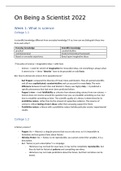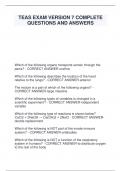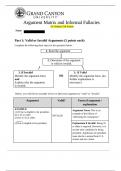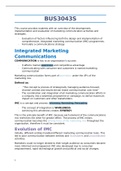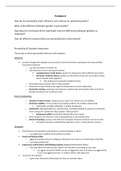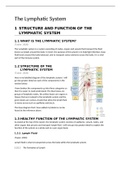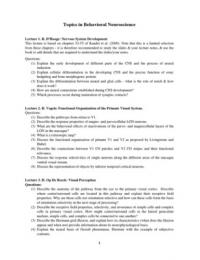Normal/pathological aging
Normal aging
What is old?
- Increase life expectancy -> 40 year (1850) to 79-83 years (2012).
- Prevalence of elderly in NL and prognosis:
o 16% > 65 year (2012), 26% > 65 year (2040).
o Baby boom -> 1946-1955, (1965-1970), (2000-2004).
Biomedical perspective
- Cell level -> the end of a chromosome called telomeres. When a cell keeps dividing, the
telomeres shortens, and eventually the cell division stops. When the cell becomes to small it
dies. Cancer cells do not get shorter and therefore live forever.
- Brain -> atrophy means dying brain cells. Lesions of white matter is a normal process of
aging, but if it dies more rapidly it is a sign of a disorder.
o There are changes in plasticity in normal aging:
▪ Deterioration of dendritic branching
▪ Dysregulation calcium in neurons
▪ Changes synaptic connectivity
▪ Changes are subtle and selective
▪ Hippocampus and PFC particularly vulnerable
Neuropsychological perspective
- Processes that involve manipulations decrease with age. This starts at the age of 27.
Reasoning, spatial visualization, memory and mental speed are all vulnerable for aging.
- Individual differences -> there are declines in test performance. The standard deviations of
these test are quite stable over time. Thus, there are individual differences but these
differences do not change when people get older.
- Cross-sectional vs. longitudinal studies -> those methods show different results. The main
factor for this difference is the practice effect -> longitudinal -> the results get better in the
end.
Pathological aging
Dementia
- Prevalence dementia -> there is a difference between high-income and low and middle-
income countries.
o 2015 -> low/middle income = 20 million, high-income = 45 million.
o 20150 -> low/middle income = 35 million, high-income = 130 million.
- Subtypes dementia -> Alzheimer 70%, vascular 17%, and other dementia 13%.
1

